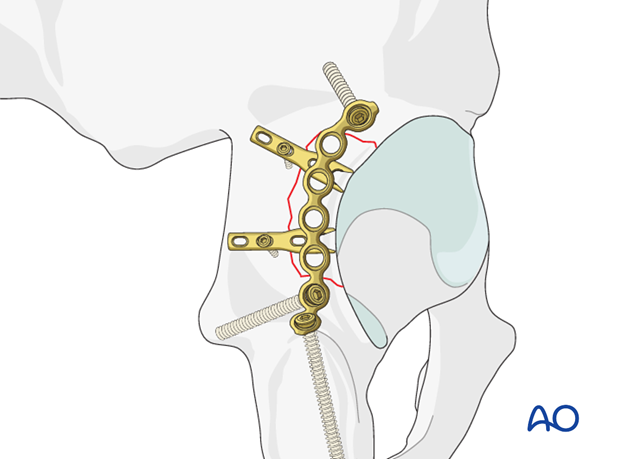Basic technique: spring hook plates
1. Pearl: Spring hook plates
Principle
Spring hook plates can stabilize posterior wall fragments that are too small or too peripheral for lag screws. They are available pre-contoured or are prepared from small fragment one-third tubular plates.
Be careful to ensure that the hooks of the spring plate do not impale the labrum and are far enough away from the edge of the joint not to scratch the femoral head.
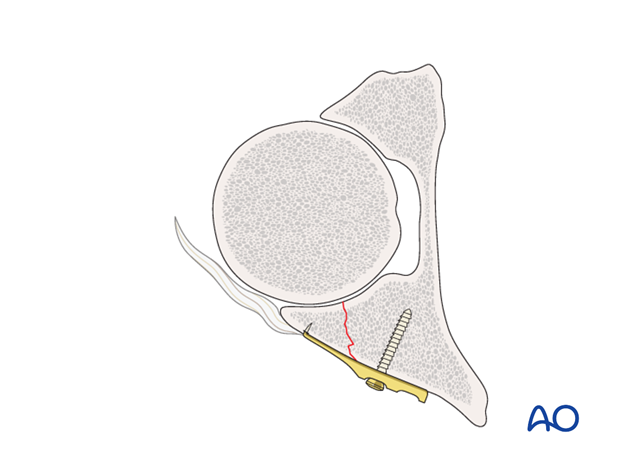
Pre-contoured plate
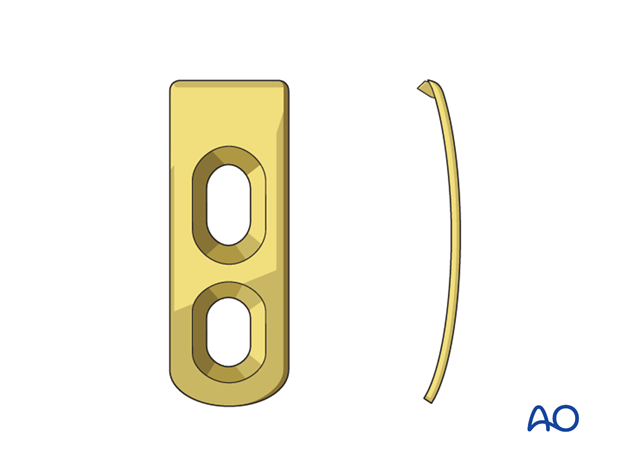
Cut off the plate
In many countries, it is satisfactory to use a one-third tubular plate as it is inexpensive. Take a three or four-hole one-third tubular plate. Cut off the tip through a hole.
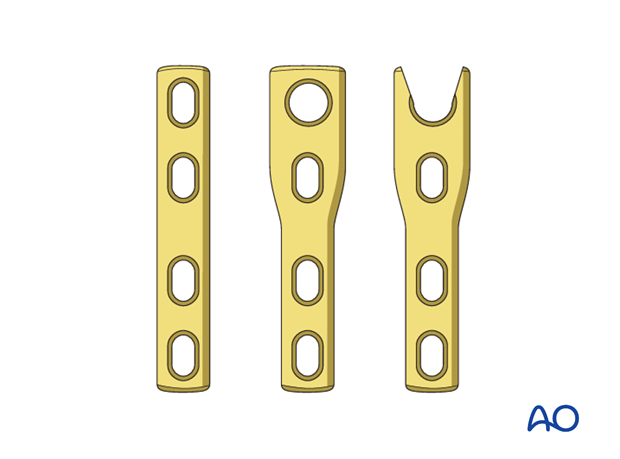
Bend the ends into hooks
Bend the newly created prongs downwards to create small hooks.
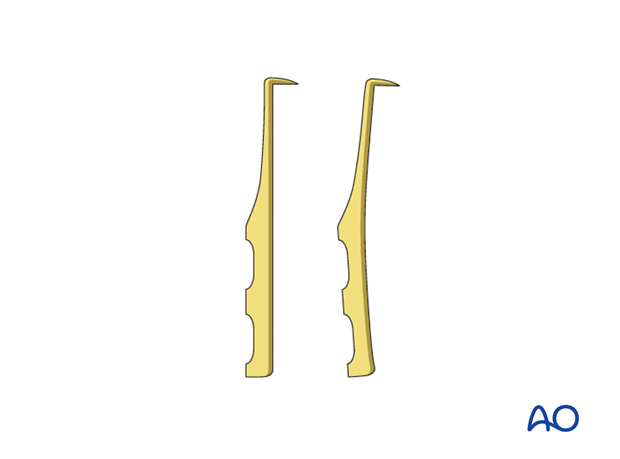
Overbend the hook
The shape of the hook plate should be more convex than the underlying bone, so that tightening its screw compresses the hooks against the fragment to be stabilized.
Proper alignment is achieved by compressing the fragments against the femoral head.
Great care must be taken to ensure that the hooks do not penetrate the articular surface. Radiographs do not demonstrate violation of the articular surface.

Fixation of the spring plate
Typically, single screw fixation of the spring plate is insufficient. Therefore, the spring plate is positioned under the definitive posterior wall plate, as illustrated.
These supplementary plates provide additional buttress support for the comminuted fragments, as well as direct stabilization via the hooks.
